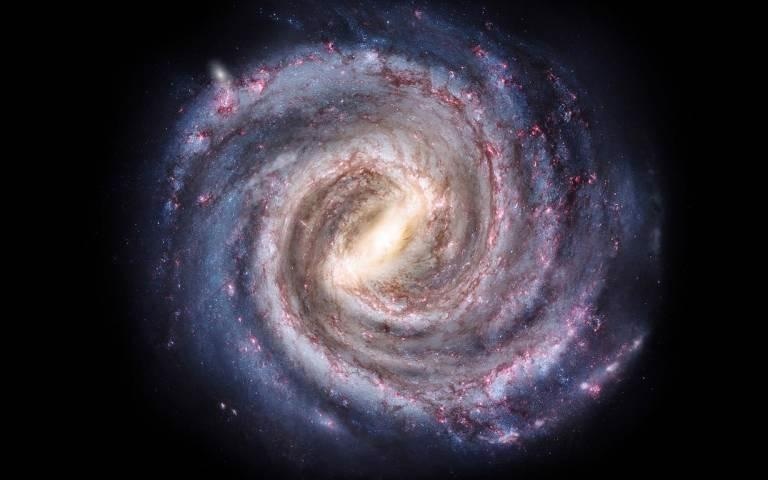Jun 15 2021
According to a new study performed by researchers from the University College London (UCL) and the University of Oxford, the spin of the galactic bar in the Milky Way galaxy has slowed down by around a quarter since it first formed. This galactic bar contains billions of clustered stars.
 Artist’s conception of the Milky Way galaxy. Image Credit: Pablo Carlos Budassi.
Artist’s conception of the Milky Way galaxy. Image Credit: Pablo Carlos Budassi.
Astrophysicists have anticipated this slowdown for three decades, but this is the first time it has been quantified. According to the researchers, this discovery provides a new kind of understanding about the nature of dark matter, which behaves similar to a counterweight slowing the spin.
In the new study recently reported in the Monthly Notices of the Royal Astronomical Society, scientists looked at the Gaia space telescope observations of a huge group of stars, called the Hercules stream, which are in resonance with the galactic bar — that is, they spin around the galaxy at the same speed as the spin of the galactic bar.
Such stars are gravitationally confined by the rotating bar. The same phenomenon takes place with the Trojan and Greek asteroids of Jupiter. These asteroids spin around Jupiter’s Lagrange points (behind and ahead Jupiter). If the spin of the bar slows down, such stars are likely to travel further out into the galaxy, maintaining their orbital period equivalent to that of the spin of the galactic bar.
The team observed that the stars in the stream bear a chemical fingerprint — they are richer in bulkier elements (known as metals in astronomy), thus demonstrating that they have moved away from the galactic center in which stars and star-forming gas are around 10 times as rich in metals in comparison to the outer galaxy.
With the help of this data, the researchers deduced that the bar, composed of billions of stars and trillions of solar masses, had slowed down its spin by a minimum of 24% since its formation.
Astrophysicists have long suspected that the spinning bar at the centre of our galaxy is slowing down, but we have found the first evidence of this happening. The counterweight slowing this spin must be dark matter. Until now, we have only been able to infer dark matter by mapping the gravitational potential of galaxies and subtracting the contribution from visible matter.
Dr Ralph Schoenrich, Study Co-Author, Physics and Astronomy, University College London
Dr. Schoenrich added, “Our research provides a new type of measurement of dark matter – not of its gravitational energy, but of its inertial mass (the dynamical response), which slows the bar’s spin.”
Our finding offers a fascinating perspective for constraining the nature of dark matter, as different models will change this inertial pull on the galactic bar. Our finding also poses a major problem for alternative gravity theories — as they lack dark matter in the halo, they predict no, or significantly too little slowing of the bar.
Rimpei Chiba, Study Co-Author and PhD Student, University of Oxford
The Milky Way, similar to other galaxies, is believed to be integrated into a “halo” of dark matter that expands beyond its visible edge.
While dark matter is not visible and its nature is not known, its presence is deduced from galaxies that act as if they were hidden in considerably more mass than can be seen. There is believed to be around five times more dark matter in the Universe than that of normal, visible matter.
Alternative gravity theories, including altered Newtonian dynamics, deny the concept of dark matter and rather seek to describe the differences by tweaking the theory of general relativity made by Einstein.
The Milky Way is known to be a barred spiral galaxy, with a dense bar of stars in the center and spiral arms that extend through the disc beyond the bar. The bar spins in the same direction as the galaxy.
The study was financially supported by the Royal Society, the Takenaka Scholarship Foundation, and the Science and Technology Facilities Council (STFC).
Journal Reference:
Chiba, R & Schönrich, R (2021) Tree-ring structure of Galactic bar resonance. Monthly Notices of the Royal Astronomical Society. doi.org/10.1093/mnras/stab1094.